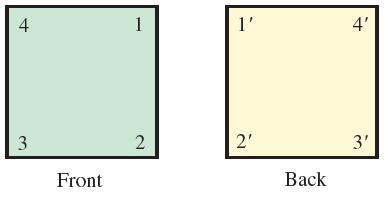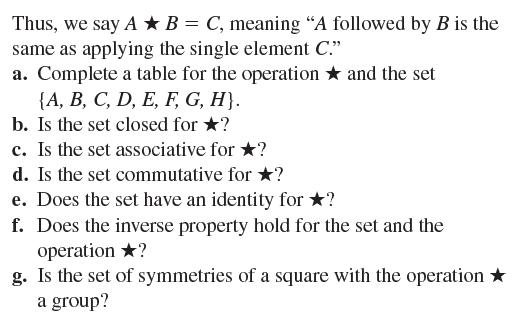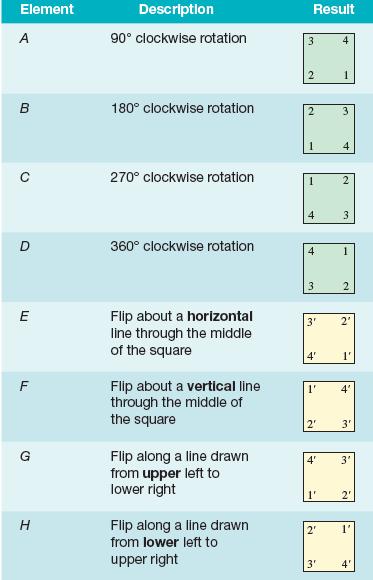Write a paper on the symmetries of a cube. Look at Problem 60, Section 5.6 for some
Question:
Write a paper on the symmetries of a cube. Look at Problem 60, Section 5.6 for some ideas about writing this paper.
Data from Problem 60
Cut out a small square and label it as shown in Figure 5.19.
Figure 5.19

Be sure that 1 is in front of 1´, 2 is in front of 2´, 3 is in front of 3´, and 4 is in front of 4´. We will study certain symmetries of this square—that is, the results that are obtained when a square is moved around according to certain rules that we will establish.
Hold the square with the front facing you and the 1 in the top right-hand corner as shown. This is called the basic position.

Now rotate the square 90° clockwise so that 1 moves into the position formerly held by 2 and so that 4 and 3 end up on top. We use the letter A to denote this rotation of the square.
That is, A indicates a clockwise rotation of the square through 90°. Other symmetries can be obtained similarly according to Table 5.4. You should be able to tell how each of the results in the table was found. Do this before continuing with the problem.
We now have a set of elements: {A, B, C, D, E, F, G, H}.
We must define an operation that combines a pair of these symmetries.
Define an operation ![]() which means “ followed by.” Consider, for example, A
which means “ followed by.” Consider, for example, A ![]() B: Start with the basic position, apply A, followed by B (without returning to basic position) to obtain the result shown:
B: Start with the basic position, apply A, followed by B (without returning to basic position) to obtain the result shown:


Table 5.4

Step by Step Answer:






